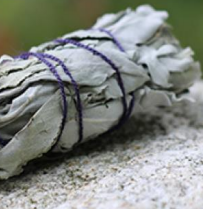The Tribal Juvenile Healing to Wellness Court is a transformative strengths-based judicial process. The Juvenile Healing to Wellness Court should be designed to provide therapeutic and individualized responses for Tribal youth. There is no singular definition or type of Tribal Juvenile Healing to Wellness Court. Generally, the Juvenile Healing to Wellness Court applies focused judicial responsiveness in conjunction with treatment, mentorship, cultural connectivity, and community engagement to support youth sobriety, wellness and future autonomy.
Session One: Best Practices and Promising Approaches for Adolescent Natives
Session Objectives:
- Understand the goals of the Wellness court and processes to support Tribal youth.
- Survey the Tribal Ten Key Components for Wellness Courts and other Promising Approaches to support youth diversion and treatment.
- Study the foundational elements of the Juvenile Healing to Wellness court structure.
Session Two: Developing the Juvenile Healing to Wellness Court Team
Session Objectives:
- Review the interdisciplinary approach to the Juvenile Healing to Wellness court.
- Survey the roles and responsibilities of core team members within the Wellness court framework.
- Discuss the development of partnerships that can support effective treatment and referral to appropriate services.
Session Three: Risks and Needs
Session Objectives:
- Understand and determine processes to support selection of youth participants within the Wellness Court structure.
- Review guidelines and research that support the development of processes that will assist the team in selecting court participants.
- Discuss appropriate measures to utilize in selecting youth participants based on community and local needs/strengths.
Session Four: Case Management and Community Supervision
Session Objectives:
- Understand approaches to support effective case management processes to support youth.
- Survey processes integrated within Wellness Court structures to support team communication and ongoing supportive interaction and case progress for youth participants.
- Discuss resources and supportive tools that can assist with case management processes.
Session Five: Promoting Positive Behavior Change: Responses in the Juvenile Healing to Wellness Court
Session Objectives:
- Understand the types of activities that can support positive behavior change, including responses to positive and negative participant behaviors.
- Survey resource tools to support effective response to participant behaviors within the Wellness Court.
- Discuss phase progressions within the Wellness Court framework.
Session 6: Juvenile Healing to Wellness Court Phases
Session Objectives:
- Understand the definition of “therapeutic” justice and the purpose and types of Tribal Healing to Wellness Courts.
- Survey the statutory diversion mechanisms to Tribal Juvenile Healing to Wellness Courts.
- Discuss the basic components of a Tribal Juvenile Healing to Wellness Court policy and procedures manual.
Resource Files:
- Session One PowerPoint: Best Practices and Promising Approaches for Adolescent Natives
- Session Two PowerPoint: Developing the Juvenile Healing to Wellness Court Team
- Session Three PowerPoint: Selecting the Right Participants
- Session Three Resource: Risks and Needs
- Session Three Resource: GAIN-SS Manual
- Session Four PowerPoint: Case Management and Community Supervision
- Session Four Resource: A Four-Pronged Approach
- Session Five PowerPoint: Promoting Positive Behavior Change: Responses in the Juvenile Healing to Wellness Court
- Session Six PowerPoint: Juvenile Healing to Wellness Court Phases
- Session Six Resource: Phase Worksheet
Resource Video Links:
- Session One: Best Practices and Promising Approaches for Adolescent Natives Video
- Session Two: Developing the Juvenile Healing to Wellness Court Team Video
Presenter Name:
Anna Clough, Kristina Pacheco
Resource Date of Presentation:
August 20, 2020
